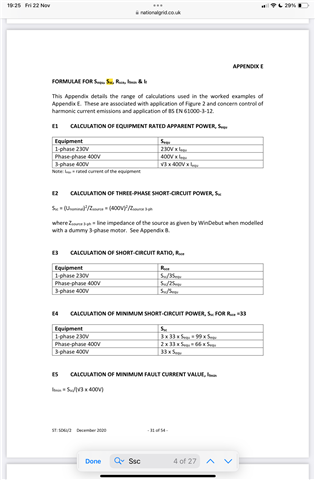I've just read in the installation instructions for a heat pump...
This unit complies with IEC 61000-3-12 under the prerequis-
ite that the short circuit line Ssc at the connection point for
the customer's installation to the public grid is greater than or
equal to 33. It is the responsibility of the installer or end user
of the unit to ensure, if necessary after consultation with the
network operator, that this unit is only connected to one con-
nection point with an Ssc value that is greater than or equal
to 33.
which got me wondering what on earth Ssc was (I've seen a few other things over they years that have specified a minimum L-N loop impedance for the supply, but at 33 this looked somewhat different).
A bit of research (e.g. Cahier technique no. 158 and this WPD document) seem to suggest that Ssc can be calculated as U²/Zsource - but plugging in some vaguely plausible numbers into that e.g. 400²/0.15Ω gives me values many orders of magnitude away from 33. Working it backwards 33 would imply a Z of around 150kΩ which feels equally implausible.
Obviously there's something I'm not understanding here. Or did they perhaps mean Rsce = 33?
any ideas?
- Andy.
